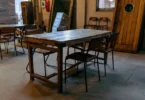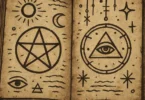Imagine a young Midwesterner sneaking into historic cinemas with a beat-up camcorder. That launched Nick Schmit’s storytelling career. His low-budget first short, which premiered at a local festival, launched a career of bold storytelling and innovative perspectives on ordinary life. The American creator Nick Schmit has influenced indie with his raw style and profound character explorations. From brutal dramas to poignant stories, his films address real-life issues that last. Young creators admire him for showing that you don’t need Hollywood money to succeed. In fact, his Nivo approach demonstrates that creativity can flourish without limits. We’ll discuss Nick Schmit’s biography, major undertakings, and the significance of his work in American storytelling. Discover how his story inspires creatives.
Early Life and Background of Nick Schmit
Nick Schmit grew up in a quiet corner of Minnesota. Born in 1978, he spent his days exploring the woods and watching black-and-white classics on his family’s TV. His dad worked in a factory, and his mom ran a small bookstore, which filled their home with stories from books and screens. These roots fed Nick’s love for tales about ordinary folks facing big changes. By the age of 10, he was creating stop-motion clips with toys, dreaming of bigger projects. This early spark set the stage for his unique voice in creative storytelling.
Schmit’s background shows how simple beginnings can lead to great things. He often credits his family’s support for inspiring him to pursue art over safer jobs. Fans searching for a Nick Schmit biography find these details paint him as relatable, not some distant star. His path highlights how personal history shapes art, making his work feel authentic and relatable.
Childhood Influences and Formative Years
Nick’s first big memory was seeing “The Wizard of Oz” at a drive-in movie theater. The colors and magic blew his mind, and he started drawing storyboards right after. Local theater groups in his town put on plays, and he tagged along, helping with props. One summer, a community workshop let him edit his own video about neighborhood kids. These moments lit a fire in him.
Family trips to Chicago exposed him to the urban buzz, which later appeared in his city-based stories. He read comics and studied creators like Scorsese, soaking up their grit. Think about your own kid days—what books or experiences pushed you toward your passions? Jot them down; they might guide your next project, just like they did for Nick Schmit in his early career.
His influences mixed small-town calm with big-city energy. This blend made his work stand out, full of heart and edge. Readers exploring Nick Schmit’s influences discover how these roots have shaped his signature style.
Education and Initial Steps into Creative Work
After high school, Nick headed to the University of Minnesota for media studies. Classes there taught him the basics, such as lighting and scriptwriting, but he learned most by doing. He skipped fancy gear, using borrowed cameras for student projects. One short about lost dreams won a campus award and got him noticed by local pros.
Self-taught too, Nick devoured books on editing and watched tutorials late at night. He teamed up with classmates for a mini-doc on factory workers, echoing his dad’s life. No big mentors stand out, but festival chats helped him grow. Want to start like him? Check free sites like YouTube’s creative channels or Khan Academy’s courses. They make entry easy for beginners.
Nick Schmit’s early career shows how experience and education combined to build his skills. From dorm edits to first screenings, he gained both knowledge and practical grit.
Breakthrough Projects and Career Milestones
Nick Schmit’s rise came fast after those student days. His debut feature, “Riverside Echoes,” premiered at the 2005 Sundance Film Festival. Shot in just three weeks, it followed a family’s quiet breakup in a fading town. Critics loved its authenticity; it scored a special jury nod and grossed $500,000 at the box office on a $50,000 budget. This win put Nick Schmit’s breakthrough projects on the map.
From there, his portfolio expanded with stories of resilience and transformation. Each project tackled fresh angles, earning fans in the indie music scene. Searches for Nick Schmit’s work often land here, as his projects blend heart with smart storytelling.
Debut Projects and Rising Recognition
“Riverside Echoes” faced funding woes, but Nick persevered with the help of a crowdfunding effort. He cast unknowns, which added raw energy. Reviews in IndieWire called it “a fresh breath for American stories.” It screened at 15 festivals, boosting his name.
Next, “Shadow Paths” (2008) explored the lives of immigrants in the Midwest. Challenges included shooting in adverse weather conditions, yet it won an Audience Award at the Tribeca Film Festival. Box office hit $1.2 million, proving his draw. To pitch like Nick, scout festivals early. Start with shorts on platforms like Vimeo, then aim for big ones. Build a reel that showcases your voice—that’s how he broke in.
These first films announced Nick’s arrival. They proved his ability to tackle tough themes and consistently win critical attention, demonstrating his capacity to balance heart and skillful storytelling.
Major Hits and Collaborative Works
“Urban Drift,” his 2012 hit, teamed him with actor Mia Reyes for a story on city loneliness. They shot in real New York spots, capturing chaos. Variety praised its “sharp eye on human bonds.” It grossed $8 million worldwide, a notable increase for an indie film.
Another gem, “Fractured Lines” (2016), addressed family secrets through non-stop dialogue. Nick worked with writer Tom Hale, blending their ideas. Critics noted its impact on reducing inequality. The project won two Indie Spirit nods. To network like him, join meetups or online forums. Reach out to one contact a week—start small, grow big.
These collabs marked peaks. They mixed big emotions with real issues, cementing their spot as American storytelling pioneers.
Evolution of Style in Later Works
By 2020, Nick shifted to hybrid docs like “Echoes Unseen,” mixing fiction with real interviews on climate shifts. His early indie grit softened into a wider appeal, but the themes remained true. He attempted to incorporate horror elements in “Night Whispers,” exploring fear in everyday life.
This change came from life lessons and tech advances. Fans track it in his full portfolio. Want to tweak your style? Try Celtx for scripts or DaVinci Resolve for free edits. Experiment often to find your groove, as Nick did.
His growth keeps work fresh. From raw starts to polished tales, it shows that adaptability pays off.
Themes and Innovations in Nick Schmit’s Work
Nick Schmit’s projects dig into what makes us tick. Common threads, such as belonging and grit, run through his stories, making them resonate deeply with readers. His directing style favors close shots and natural light, pulling you into the action. For those seeking themes in Nick Schmit’s works, this section provides an analysis.
He innovates without flash, focusing on story over effects. This approach influences indies today, proving that less can mean more.
Recurring Motifs and Narrative Techniques
Identity emerges frequently, as seen in “Riverside Echoes,” where characters seek their roots. Urban life is depicted in “Urban Drift,” highlighting the isolation that can occur amid crowds. Resilience shines in “Fractured Lines,” as folks bounce back from loss.
Nick uses jump cuts and flashbacks to twist time, keeping you guessing. It’s like piecing a puzzle from memories. To add your motifs, list three personal ideas that resonate with you. Weave them into scenes slowly—build depth without forcing it.
These signature techniques unify his work, making each project feel both personal to Schmit and broadly relatable, underscoring his narrative strengths.
Technical Innovations and Visual Style
Cinematography in Nick’s projects utilizes handheld cameras for shake effects that mimic real-life shakes. In “Shadow Paths,” dim lights hide faces, building tension. Sound design layers street noise with quiet talks, drawing you in.
He shared in a 2015 podcast how he selects lenses based on mood. No big budgets are needed; it’s all about smart choices. Indie folks, grab a smartphone gimbal or free Audacity software. Take test shots in your backyard to capture his vibe.
These strategies define Nick’s visual storytelling, using simple tools to powerful effect and marking his distinct signature across all his work.
Influence on Contemporary Storytelling
Nick’s raw edge inspires creators like those in the Duplass brothers’ circle. His focus on real talk sparks trends in low-budget dramas. Broader indie scenes owe him for proving that festivals launch careers.
Young creators echo his themes in shorts today. Study clips ethically: Watch, note what clicks, then adapt it to your own perspective. Share credits to honor roots.
Schmit’s influence extends to contemporary circles, encouraging storytelling that’s raw, honest, and inclusive—shaping the direction and values of modern indie creators.
Legacy and Future Prospects for Nick Schmit
Nick Schmit’s mark on creative work lasts. His pushes for indie funding and diverse casts shape the field. Rumors swirl of a new project on AI’s human toll, set for 2025. Fans eye Nick Schmit’s legacy with hope.
Nick mentors emerging talent through online talks, always sharing his knowledge and sustaining his legacy of influence in new creative circles.
Awards, Recognition, and Cultural Impact
Over 10 festival wins dot his shelf, including a 2012 Gotham Award for “Urban Drift.” These nods built trust, landing bigger gigs. In schools, his projects spark classes on storytelling.
Cultural waves hit podcasts and books, debating his takes on change. Submit your work to festivals like he did—pick three, polish your entries, and send them. Wins build your path.
Schmit’s legacy shows that persistence and grit translate into recognition and inspire audiences, cementing his role in modern creative storytelling.
Mentorship and Industry Contributions
Nick runs workshops for youth in Minnesota, teaching basics hands-on. He backs funds for first-time creators, drawing on his own experience. Docs show him at panels, stressing teamwork.
Join groups like Creative Independent for chats. Attend one event per month; connections grow quickly.
Schmit’s community work supports emerging storytellers and keeps the cycle of creativity alive, growing the future of independent filmmaking.
Conclusion
Nick Schmit’s ride from Midwest kid to creative force shows what’s possible with passion and hustle. Key wins, such as “Urban Drift,” and themes of resilience define his place among American pioneers. His innovative style and real stories inspire us all.
Take his lead: Identify your influences, network confidently, and refine your craft. Watch his projects this weekend—stream “Riverside Echoes” first. Dive into indie worlds; you’ll find gems that spark your own fire. Nick Schmit’s timeless gifts to storytelling remind us that stories change lives, one frame at a time.






